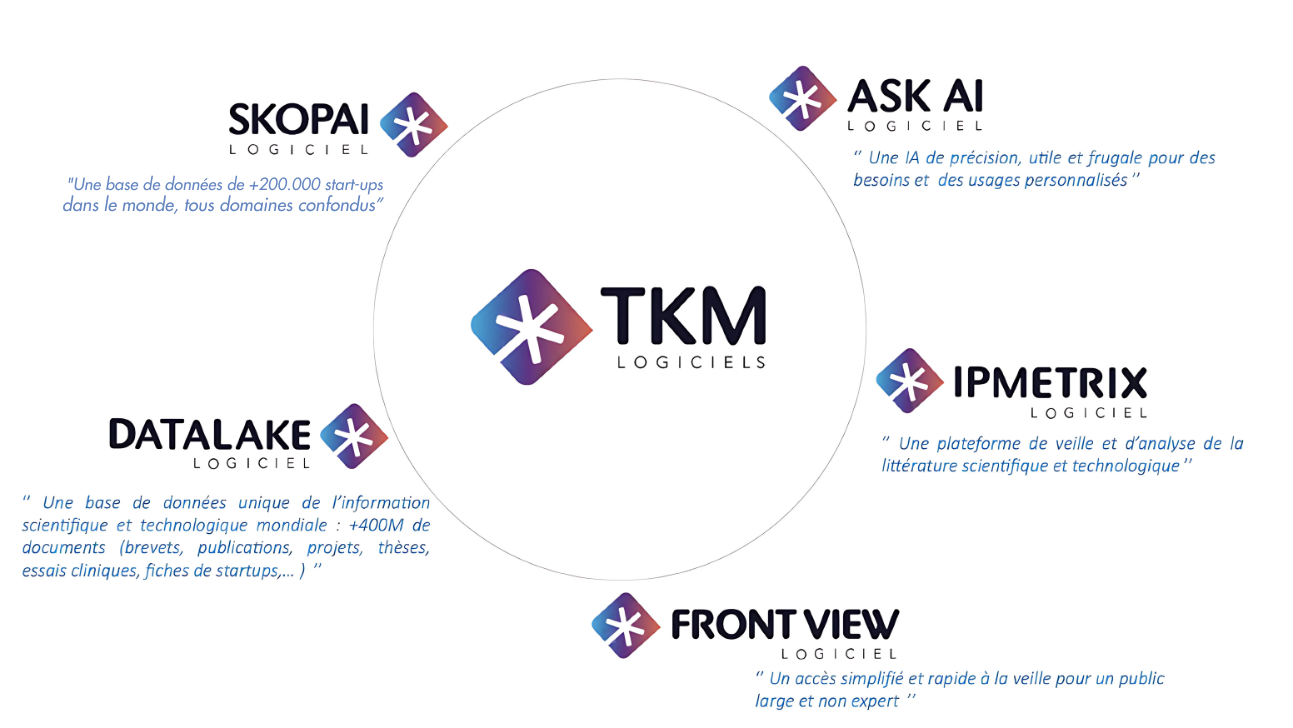In this context, proactive monitoring should ideally make it possible to perceive what others do not yet see.
But how can we succeed in distinguishing from the ever-increasing mass of information the weak signal announcing a significant change? By adopting the right methodology and equipping yourself with the right tools. Explanations.
 Weak signals: definition
Weak signals: definition
A weak signal is information of low intensity, or a deduction from an isolated fact or partial information, which once increased, can fuel prospective strategic thinking aimed at anticipating a crisis or its impacts on the company.
It makes it possible to anticipate an event (or a series of events) well before its occurrence becomes clearly obvious to all observers.
A weak signal can slip through the cracks of an internal monitoring system without its strategic value being detected. It sometimes happens during a RETEX that we realize a posteriori that we had in our hands all the warning signs (and of low intensity) suggesting the launch by a competitor of a very innovative or very impactful product. .
The weak signal is in fact potentially carrying key information whose highly strategic nature may not appear obvious at this stage for a majority of employees who will have this information in their hands.
So, a weak signal refers to:
- Information that will not be strategically useful for 99% of the population
- But which will have an impact on a business / a sector / a technological field
Good to know: The authorship of the notion of weak signal can be attributed to Igor Ansoff in the 1970s and taken up and then amplified in France by Professor Humbert Lesca, Professor Emeritus at the University of Grenoble, as part of his work on strategic anticipatory monitoring (VAS).
Weak signals: two examples
In 2014, the whole world discovered Apple watches!
What surprise? Probably not for an informed observer, who had the opportunity since the beginning of the 2000s to observe the growing interest of the American giant in "wearable technologies" , illustrated by a few acquisitions then by the filing of several patents specific to “wearable electronic devices” from 2011.
As this example illustrates, it is the encounter of several distinct and fragmented pieces of information which can give rise to an intuition , a start of reflection for the analyst. At this stage, we can obviously still make mistakes and see meaning where there may not be any.
Another example: the emergence of virtual reality.
In an analysis carried out in 2015, TKM traced the emergence of virtual reality and its industrial applications, by analyzing scientific publications carried out by hundreds of researchers around the world over the previous 20 years.
The different “building blocks” that contribute to virtual reality were the subject, at the beginning of the period, of completely independent research work. Then more and more projects began to focus on the connections between these areas (video capture, geolocation, computing power, digital models, etc.). These connections intensified to give rise in the year 2000 to the emergence of virtual reality as a field in its own right, the rise of which everyone then knew.
An observer attentive to the evolution of the contents of these scientific publications could thus reasonably have an appreciable head start and anticipation compared to his competitors.
These examples illustrate an important point: detecting a weak signal in itself is not enough. It must be investigated, validated and verified. We must be able to find other signals which will, if necessary, transform this weak signal into a clear signal.
 WHY IS IT ESSENTIAL TO BE CONCERNED ABOUT WEAK SIGNALS?
WHY IS IT ESSENTIAL TO BE CONCERNED ABOUT WEAK SIGNALS?
A technological break-through can also constitute a weak signal which will usefully feed into a proactive innovation strategy. For example, the fact that it is now possible to graft micro-LEDs onto textiles in an industrial manner can give an R&D manager in automobile fitting the intuition that there is something innovative to invent. .
Also, the same weak signal can be indicative of :
- An opportunity : by quickly seizing the weak signal, you can be among the first to take advantage of the new application that results from it.
- A threat : this same weak signal can herald the arrival of new entrants in a given market.
In any case, to avoid being “Uberized” by more innovative competitors, it is essential to give ourselves the means to identify weak signals in time , to then decide what we want to do with them. .
 HOW NOT TO MISS A WEAK SIGNAL DURING WATCH WORK?
HOW NOT TO MISS A WEAK SIGNAL DURING WATCH WORK?
By definition, a weak signal can come from extremely varied backgrounds . It can come from very detailed monitoring on a very specific subject, come from the results of a working group on the evolution of a standard, emerge from a competing patent or even come from a universe technical, industrial or economic very far from its own. A weak signal can thus be detected both in its daily field and coming from a completely uncorrelated universe . And that’s the complexity of the exercise!
It is therefore advisable not to limit your monitoring to your core business , but to keep an eye on: indirect competitive monitoring, Mega trends, start-up monitoring, regulatory monitoring, financial monitoring, etc.
In the field of innovation, patent databases and scientific publications – obviously – but also collaborative projects, theses, web articles, etc. are essential sources of technological and scientific monitoring worthy of the name.
However, in the context of current infobesity, searching for a weak signal can quickly become like looking for a needle in a huge haystack!
To avoid losing your monitoring unit in the meanderings of irrelevant information, it is important to equip it with the appropriate monitoring tools.
 TKM SOFTWARE: OUR GAME-CHANGING MULTI-SOURCE MONITORING SOFTWARE SUITE
TKM SOFTWARE: OUR GAME-CHANGING MULTI-SOURCE MONITORING SOFTWARE SUITE
Human intuition is key in the process of identifying a weak signal. A generic AI will not be enough to make sense of isolated information, as a human can. On the other hand, AI can greatly help to synthesize and quickly build the beginnings of intelligence in a given area and thus make it possible to monitor distant fields.
It is with this in mind that the TKM software suite was designed. Thanks to its information search and synthesis mechanisms, these tools allow analysts to reduce the time spent analyzing the mass of existing information, while allowing the phenomenon of de-fixation . In other words, thanks to our software suite, companies can move away from their dominant thought patterns, to focus on areas that were previously distant, but potentially carrying weak signals and sources of interesting opportunities!

 Weak signals: definition
Weak signals: definition
 WHY IS IT ESSENTIAL TO BE CONCERNED ABOUT WEAK SIGNALS?
WHY IS IT ESSENTIAL TO BE CONCERNED ABOUT WEAK SIGNALS? HOW NOT TO MISS A WEAK SIGNAL DURING WATCH WORK?
HOW NOT TO MISS A WEAK SIGNAL DURING WATCH WORK?
 TKM SOFTWARE: OUR GAME-CHANGING MULTI-SOURCE MONITORING SOFTWARE SUITE
TKM SOFTWARE: OUR GAME-CHANGING MULTI-SOURCE MONITORING SOFTWARE SUITE
